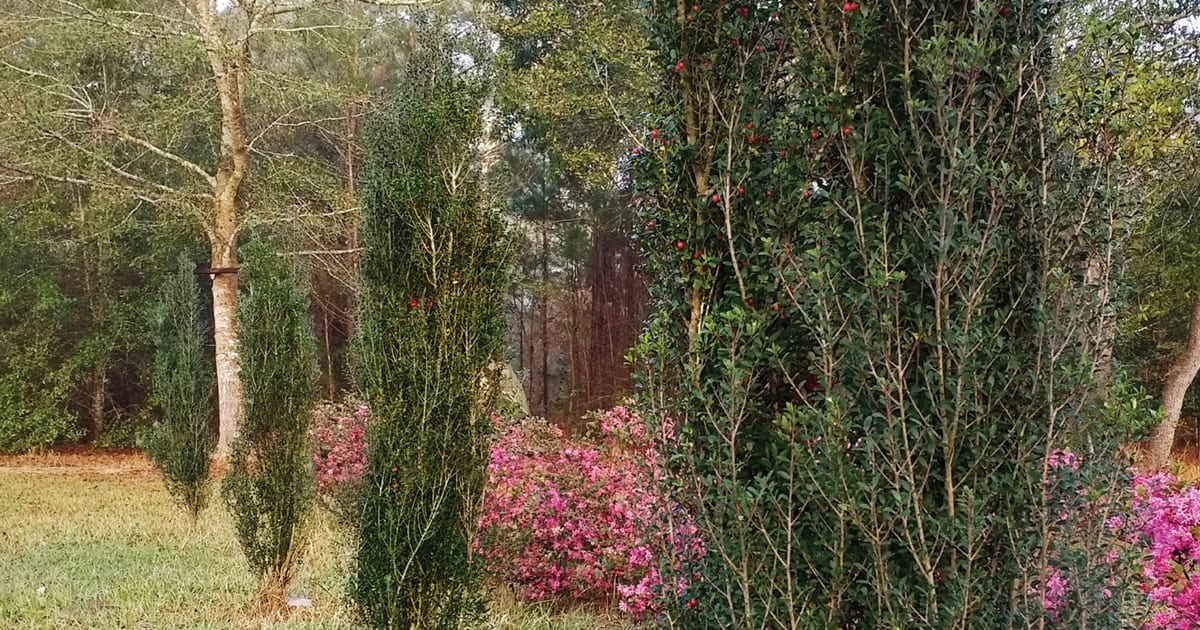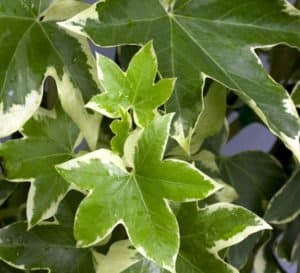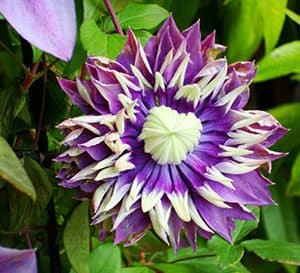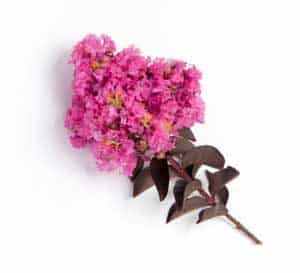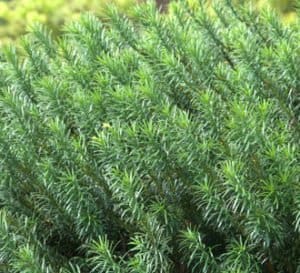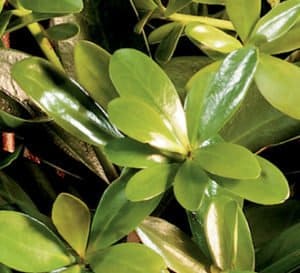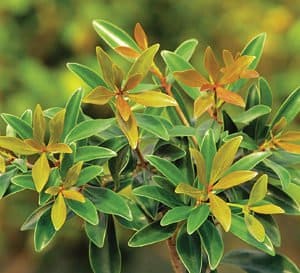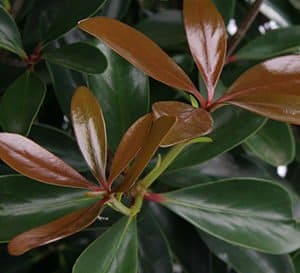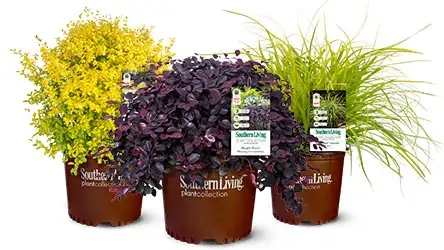Trained on a structure or another plant, vines provide a vertical element that adds height and interest to your garden scene. Vines are also effective for screening, framing an entrance or creating a focal point.
In my own garden I use both structures and shrubs to support annual and perennial vines. A classic combination I like is Roses with ‘Taiga’ Clematis. In early spring a tall cylindrical iron support hosts Rosa ‘Zephirine Drouhin,’ an old fashioned thornless rambler with sweetly perfumed cerise-rose colored flowers and a white large flowered ‘Taiga’ Clematis.
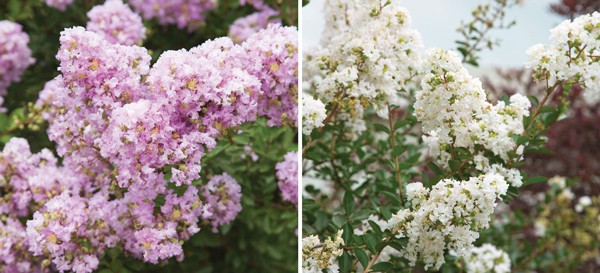
Using a shrub or tree as a living support for vines is an easy way to get the maximum amount of blooms out of your garden. Early blooming selections of Crapemyrtle, Lagerstroemia hybrids like the Early Bird series with lavender or white blooms, can also act as a trellis for vines like ‘Taiga’ Clematis.
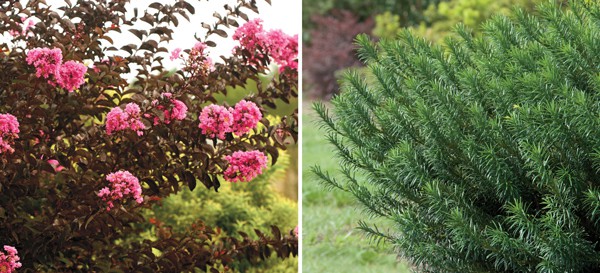
Additional shrubs and trees to consider using for training a ‘Taiga’ Clematis vine include selections of Loropetalum chinense like Emerald Snow with white flowers in spring; you could plant a late blooming dark-flowered ‘Taiga’ Clematis or, for some drama, use the Crapemyrtle Delta Jazz® as a living arbor. For a low growing hedge, the upright Yewtopia™ Plum Yew, a selection of Cephalotaxus harringtonia, is ideal. By planting a vine at its base, your Plum Yew can serve double duty and provide colorful blooms on the same plant.
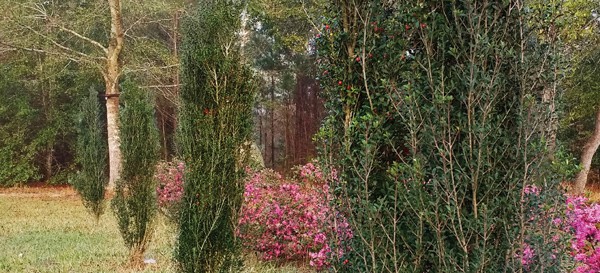
‘Scarlet’s Peak’ Holly, is another evergreen with a vertical habit and dark evergreen foliage that provides the perfect foil for annual or perennial vines that bloom all summer long like Morning Glories, Potato Vine, Love-in-a Puff, and more. Use a pair of these hollies to highlight an entrance or create an accent.
It’s worth noting that some perennial vines grow to be quite large or are aggressive and demand their own structures; in other words, they don’t play well with others. These include ‘Angyo Star’ Fatshedera, ‘Amethyst Falls’ Wisteria, Carolina Jessamine, Gelsemium sempervirens, and fiveleaf akebia, Akebia quinata. I would also add that I do not recommend English ivy as a vine unless you confine it to a container or surround it by pavement.
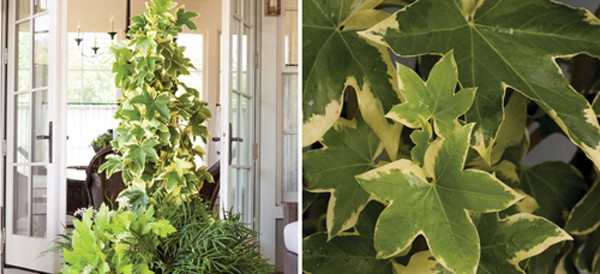
When you select a vine for your garden make sure you provide it with an adequate structure to support it. You can determine what size support you need if you know the ultimate size of the vine you are growing.
Verticality is a word I first heard used by Savannah columnist and gardener Jane Fishman. At the time, this was about ten years ago, she was gardening in the middle of a large field. Because her garden was very flat she relied on found objects to create what she referred to as “verticality.” These objects also served as supports for plants and vines to ramble and clamber over.
Add some verticality to your own garden!
Additional shrubs to train vines on:
* Bigfoot Cleyera
* Bronze Beauty Cleyera
* LeAnn Cleyera
* Oakland Holly

